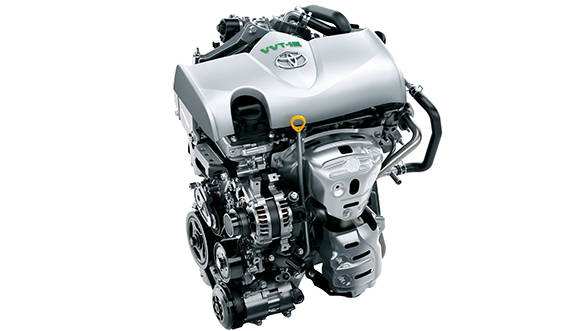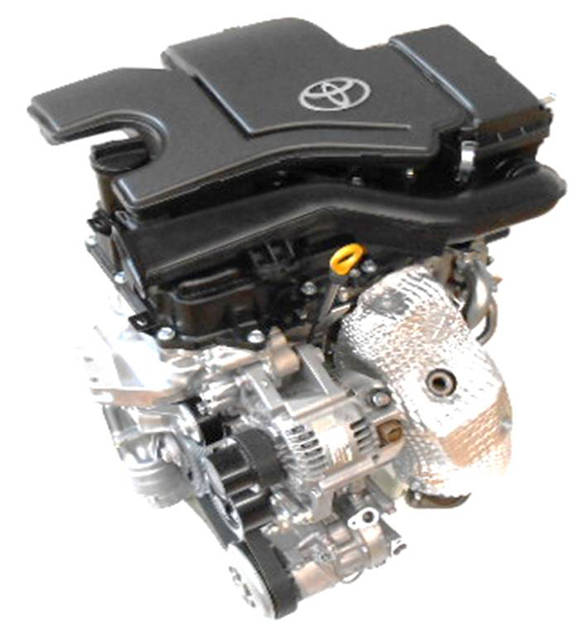Toyota launches two new engines, plans 14 more in 2015
Toyota produces some of the most fuel-efficient and environment friendly engines. And the Japanese car manufacturer continues to raise the bar for its competition with the addition of not one but two new engines - 1.0-litre and 1.3-litre petrols. But that's not all. Toyota is planning to add 14 more engines in 2015.
These two new engines have been developed using Atkinson cycle technology that are mostly found in hybrids and will spawn the 14 new motor variations.
The bigger 1.3-litre 4-cylinder engine employs Atkinson cycle which is found in hybrid engines and is basically a combustion cycle involving higher expansion ratio than normal compression ratio. This leads to higher thermal and better fuel efficiency which reduces the amount of heat wasted. A new design for the intake port makes for a strong tumble flow of the air-fuel mixture facilitating better combustion.

The engine employs other technologies including a cooled EGR system, Variable Valve Timing-intelligent Electric (VVT-iE) and idling stop/start. The result Toyota says is a maximum thermal efficiency of 38 per cent and fuel efficiency increase of 15 per cent over the current crop of vehicles. But while the 1.3-litre engine using Atkinson cycle improves fuel efficiency, the drawback is loss of power. The power loss is due to opening of the intake valve for a brief period during the compression stroke.
This drawback is overcome in a hybrid car by utilising power from the electric motor. But since these engines will not be powering a hybrid, it will be interesting to see how Toyota manages to boost power while still maintaining the efficiency figures.

The 1.0-litre 3-cylinder engine also makes use of Atkinson cycle and has been developed in conjunction with Daihatsu. This engine has a cooled EGR system, idle stop/start function and tumble flow generating intake port. Toyota says that this engine has a thermal efficiency of 37 per cent and can give an improvement of around 30 per cent in fuel-efficiency over present vehicles, thanks to a high compression ratio.
Toyota Develops Engines with Improved Thermal, Fuel Efficiency
| Toyota City, Japan, April 10, 2014?Toyota Motor Corporation aims to further increase the environmental performance of its vehicles with a series of newly-developed, highly fuel-efficient engines that achieve outstanding thermal efficiency1. The new engines leverage combustion and loss-reduction technologies Toyota has refined in its dedicated hybrid engines, and will achieve fuel efficiency improvements of at least 10 percent2 over current vehicles. The engines will be used in models scheduled for partial redesign in the near future, and a total of 14 new engine variations will be introduced globally by 2015. One of the engines is a 1.3-liter gasoline engine in which Toyota is employing the Atkinson cycle3?normally used in dedicated hybrid engines. Use of the Atkinson cycle provides an increased expansion ratio and reduces waste heat through a high compression ratio (13.5), resulting in superior thermal efficiency. Toyota aims to further improve the fuel efficiency of the engine by utilizing other innovations including an intake port with a new shape that generates a strong tumble flow (whereby the air-fuel mixture flows in a vertical swirl) inside the cylinder, and a cooled exhaust gas recirculation (EGR) system paired with Variable Valve Timing-intelligent Electric (VVT-iE) technology to improve combustion and reduce loss. As a result, the new engine will have a maximum thermal efficiency of 38 percent4?top-level among mass-produced engines. The new features, combined with idling stop and other functions, will lead to fuel efficiency gains of approximately 15 percent2 by comparison with current vehicles. Meanwhile, a 1.0-liter engine jointly developed with Daihatsu Motor Co., Ltd. has achieved maximum thermal efficiency of 37 percent4 due to a similar tumble flow-generating intake port, a cooled EGR system, and a high compression ratio. Combination with the idling-stop function and various other fuel consumption reduction technologies allows vehicles to achieve a maximum fuel efficiency improvement of approximately 30 percent2 over current vehicles. | |












